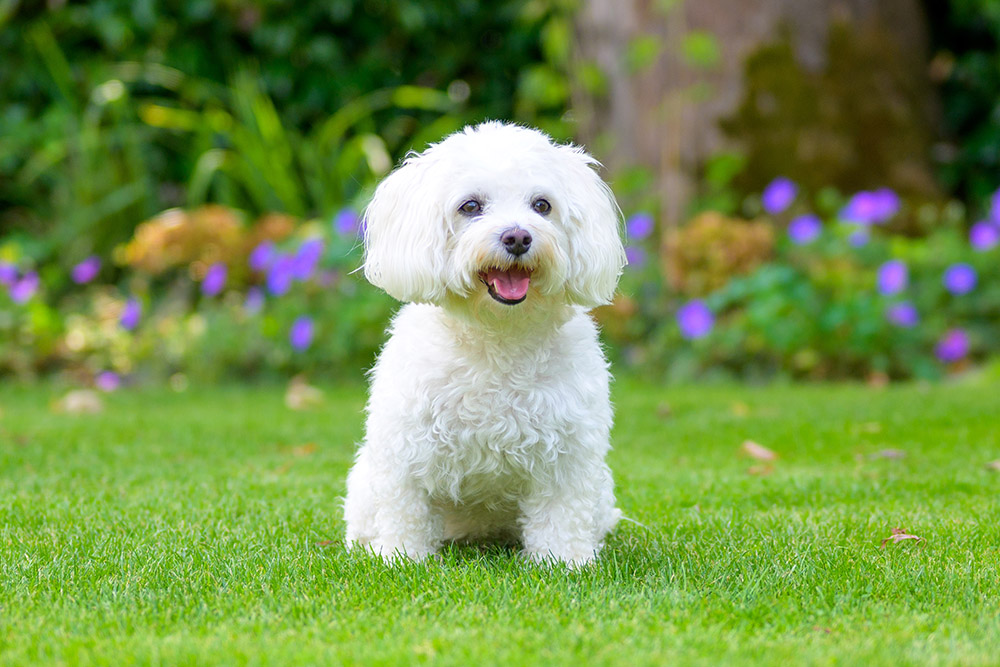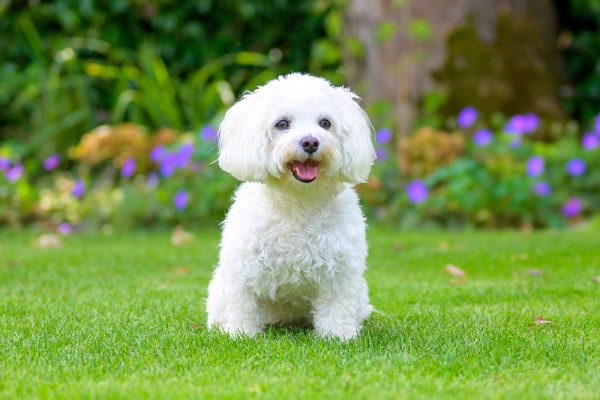Click Below to Skip Ahead
The Havamalt is a winning combination of the charming Havanese and the adorable Maltese. This pup is a sweetheart on all scores. They are intelligent dogs with an easy-going demeanor. While they have big voices for a little canine, they are easy to train. The Havamalt hasn’t earned recognition as a breed, but this pup has a lot going for them. Instead, they are one of many so-called designer breeds.
Breed Overview
Height:
9–12 inches
Weight:
5–12 pounds
Lifespan:
13–15 years
Colors:
White, silver, cream, red, gray, black
Suitable for:
Active families looking for a low-shedding and friendly dog
Temperament:
Loving, gentle, intelligent, playful
The Havamalt is a small dog from two breeds in the American Kennel Club’s (AKC) Toy Group. This hybrid makes an ideal lapdog thanks to their affectionate nature. They also adapt well to apartment life. The Havamalt has a lot to offer, whether you’re a novice pet owner or an experienced caregiver. This pup will bring some welcome sunshine into your family’s life.
Havamalt Characteristics
Havamalt Puppies
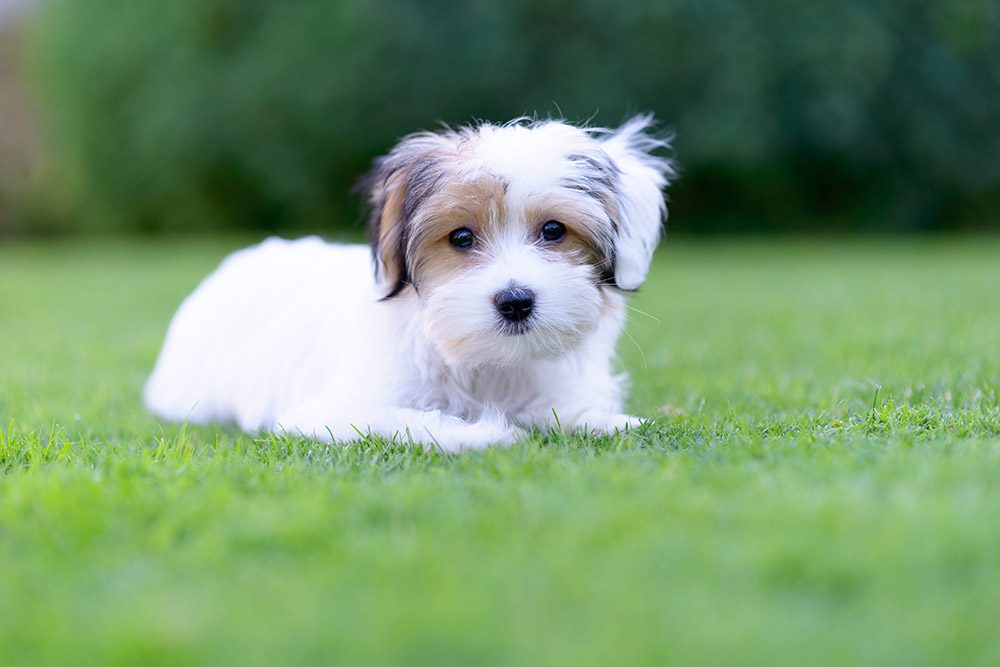
The Havamalt brings the lovable nature of both breeds to the mix. Both are favorite pets, with the Havanese at 25th and the Maltese at 38th among AKC’s most popular breeds. These dogs are somewhat delicate, given their size. You must pay close attention to the breed’s health, particularly as puppies. That applies to any toy-sized pet.
The popularity of the parent breeds might make finding a Havamalt puppy challenging since the purebred pup could undoubtedly fetch a higher price, with or without breeding rights. However, we recommend researching your purchase since breeders lack an official governing body for oversight. Verify you are indeed getting a Havamalt and not a dog full of various other breeds.
Havamalt Origin & History
The Havanese hails from Cuba, as the breed’s name suggests. They are the national dog of the country. Interestingly, the Havanese and Maltese may share a common ancestry going back to ancient Greeks and Romans, with the latter coming from the Central Mediterranean Basin.
The Havamalt rose in popularity rapidly, quickly gaining recognition from several designer dog organizations. They may provide some helpful leads for locating a puppy.
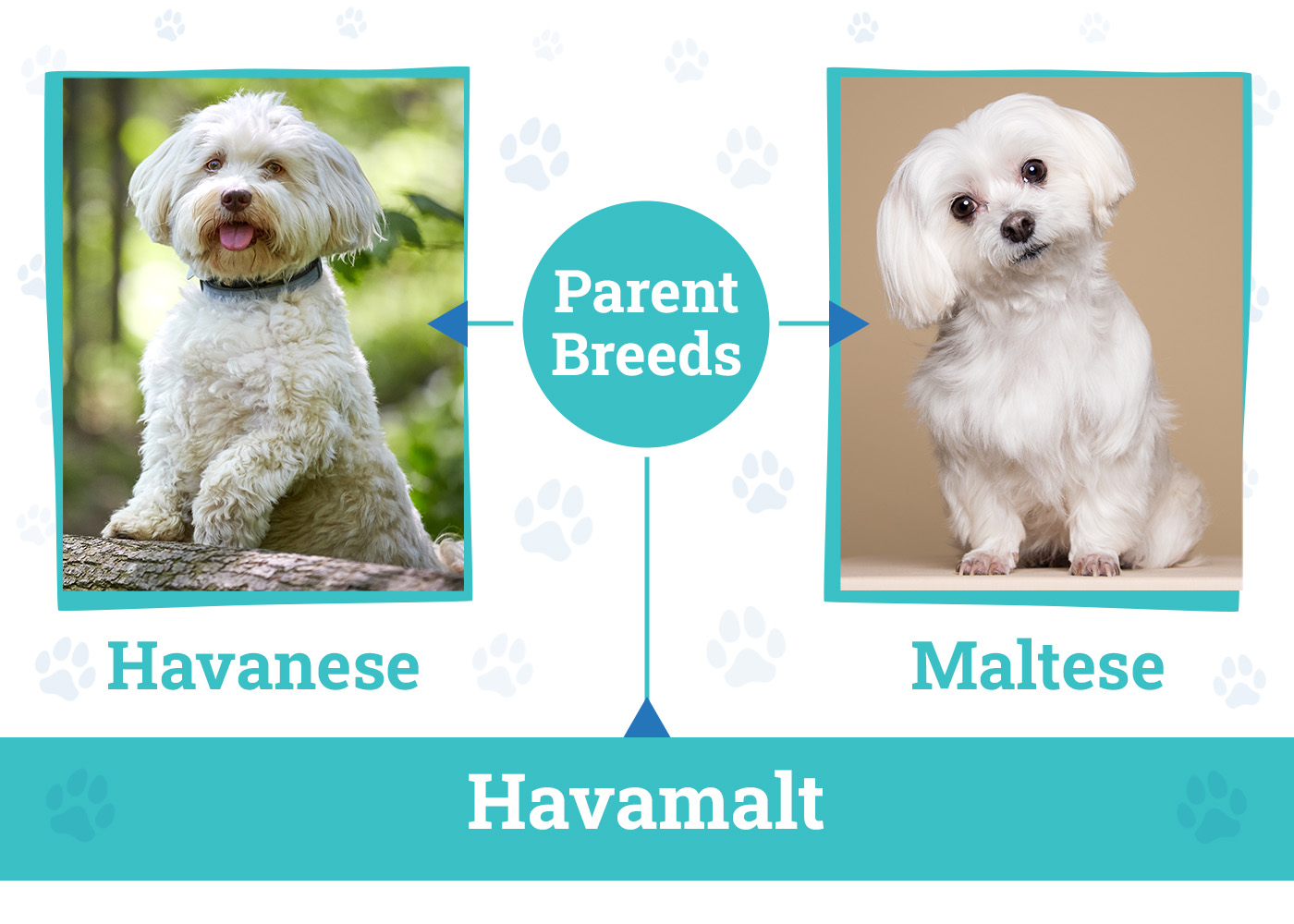
Temperament & Intelligence of the Havamalt 🧠
The combination of the Havanese and Maltese promises a delightful pet. Like their parent breeds, the Havamalt will likely fit into the role of lapdog and cuddler quite well. Neither breed hunted nor worked for their food. They have a long history as animal companions who are used to being spoiled. However, they aren’t necessarily stubborn or standoffish like some small dogs; these pups are lovers.
The parent breeds are highly intelligent, which comes from observing and learning from their human companions. Their talent lies in associating specific behaviors with desired rewards, i.e., treats or lavish praise. The Havamalt undoubtedly encompasses these same abilities.
Are These Dogs Good for Families? 🏠
The Havamalt makes an excellent family pet. They are lovey-dovey with their families. They are also playful animals. We recommend supervising playtime with the kids because of the dog’s small size. You should teach your children not to pick up your pet to avoid injuring the animal. The Havamalt has a moderate tendency to nip and bark, behaviors you must curb when they’re still young.
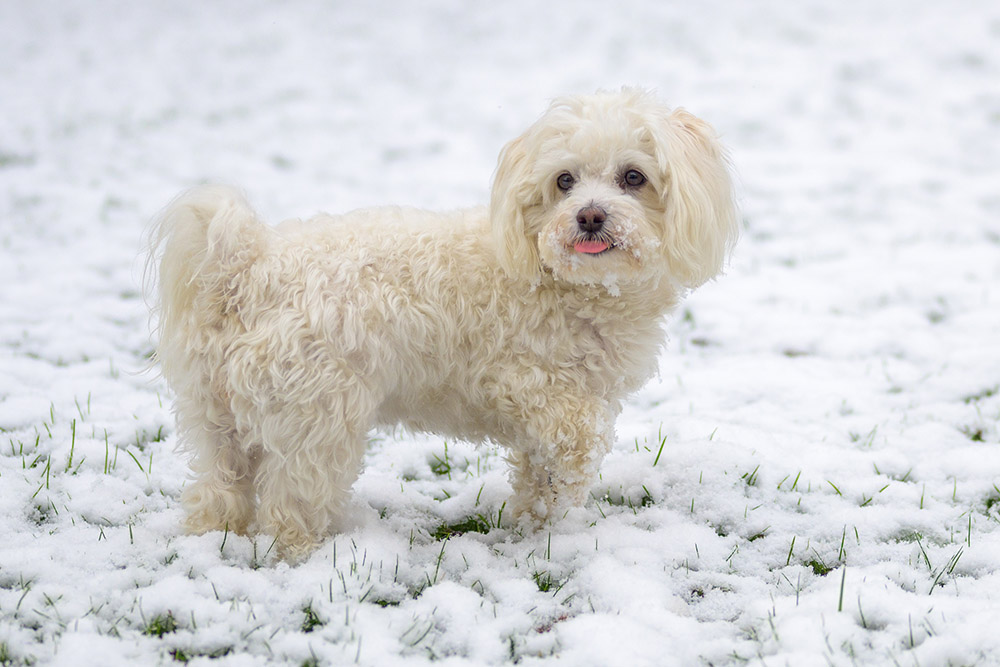
Does This Breed Get Along With Other Pets? 🐶 😽
The Havamalt can get along with other pets if introduced young. However, size is a consideration if you have large dogs in the household. Your pup may also become jealous if another pet gets more attention from you. You can expect some barking to make their feelings known. Cats might be less tolerant of a rambunctious puppy.

Things to Know When Owning a Havamalt
The Havamalt shares a trait of both their parent breeds: intolerance of being left alone. This dog wants attention and won’t like being kept in a crate all day long. They will fare best in an active household where someone is always around to keep them company. Otherwise, separation anxiety is a risk for bringing about unwanted behaviors, such as inappropriate elimination.
Food & Diet Requirements 🦴
The nutritional requirements of small breeds differ from those of large ones. They require frequent feedings as puppies to support their relatively rapid growth. These dogs grow faster than bigger canines. You should give your puppy three or four meals daily until they reach adulthood at sexual maturity. You can cut back to two after that time. Ensure that fresh water is always available.
The Havamalt has a moderate tendency for weight gain, which can increase the pup’s risk of many health conditions. We recommend limiting treats as training aids. Remember that a 10-pound dog only needs 180 to 200 calories daily. A few extras can easily tip the scales in the wrong direction.
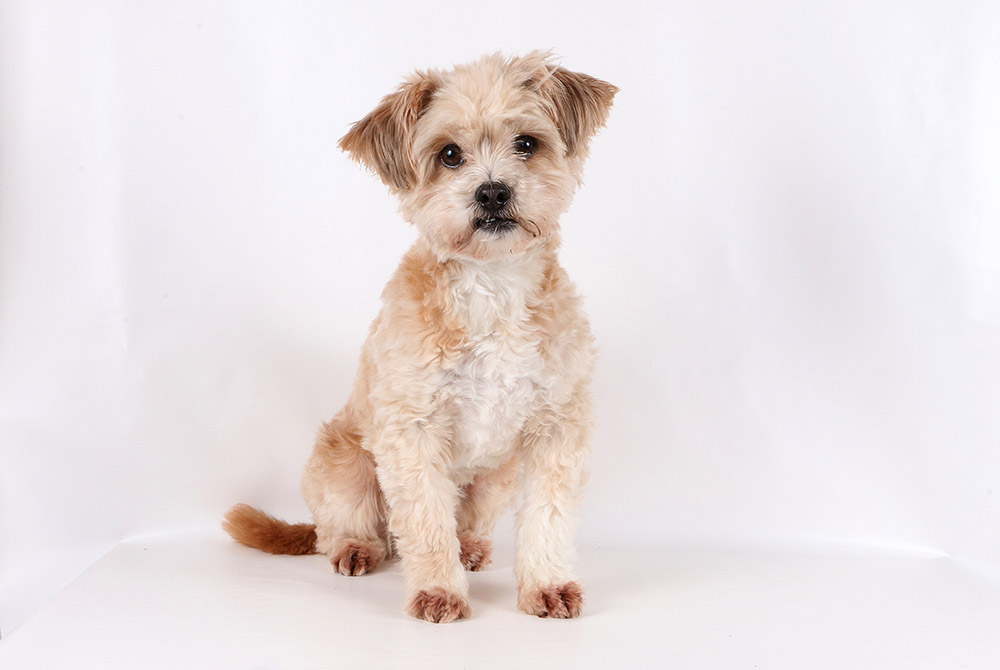
Exercise 🐕
The Havamalt isn’t particularly energetic or intense. However, these pups are playful and work off a lot of calories in this way. Nevertheless, we recommend walking your pet for at least 45 minutes daily. The leash time will expose your dog to novel experiences, other pets, and people. That will provide valuable mental stimulation and enrichment.
Training 🦮
The Havamalt is easy to train and eager to please, making your job a snap. Consistency and positive reinforcement are imperative. This dog won’t handle harsh words or punishment well. Praise and treats will work wonders toward directing your pooch toward desirable behavior, and you’ll find both are potent motivators.
Grooming ✂️
Daily combing is essential for preventing mats. The Havamalt’s coat is silky smooth, a trait both parent breeds ensure. You should check your pup’s ears and nails as part of your routine. We also suggest cleaning around their eyes, particularly for animals with light-colored coats. Small breeds are susceptible to dental disease, making brushing your pet’s teeth a necessary part of grooming maintenance.
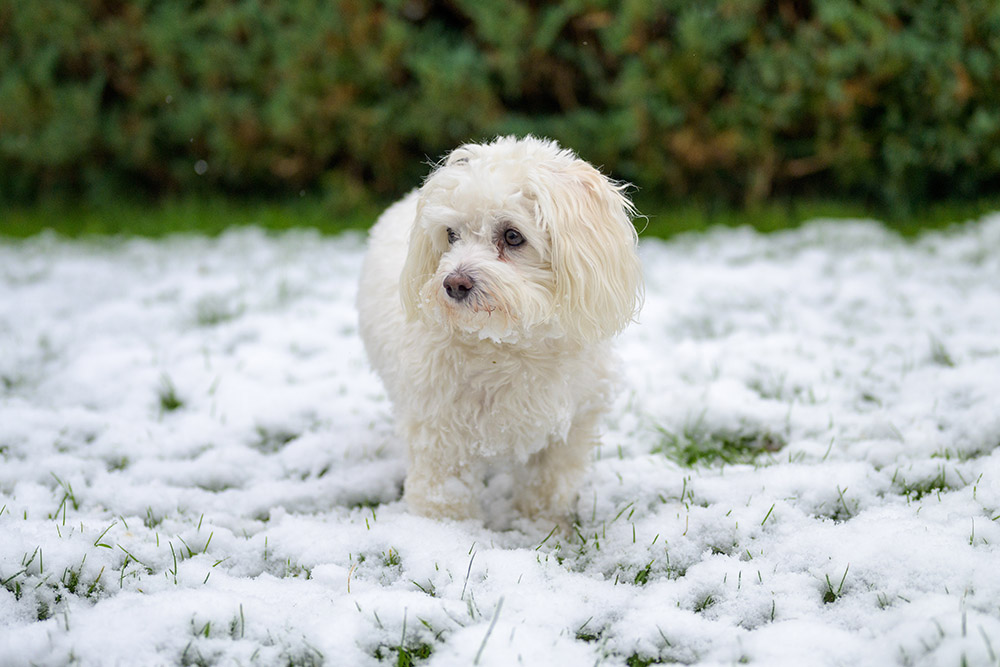
Health and Conditions ❤️
The Havanese and Maltese are both prone to some conditions often seen in small breeds. While the Havamalt isn’t a part of the Orthopedic Foundation for Animals (OFA), we can extrapolate the recommended pre-breeding screening based on the two parent breeds and their propensities. The primary concerns are patellar luxation and cardiovascular disease.
Many health conditions, such as dental disease, are preventable with the correct measures. We suggest discussing routine maintenance with your vet to keep your Havamalt healthy. We strongly urge you to only deal with reputable sellers who conduct the recommended health screenings on their dogs. It’s the best way to safeguard your purchase and the welfare of the animals.
- Eye disorders
- Dental disease
- Patellar luxation
- Liver disease
- Legg-Calve-Perthes disease
- Cardiovascular disease
Male vs. Female
The size differences between male and female Havamalts are slight, making them a non-issue on that score. You will get a lovable pet with either sex. Still, we suggest discussing spaying-neutering with your vet. Much depends on your pet’s health concerns associated with the parent breeds and your dog’s medical history.
3 Little-Known Facts About the Havamalt
1. The Havanese Almost Became Extinct
The pool of breeding animals shrunk to a reported 11 dogs in the aftermath of the Cuban Revolution. Thanks to the dedication of the breed’s enthusiasts, the breed survived, eventually becoming one of the parents of the Havamalt.
2. The Maltese’s Name Doesn’t Refer to the Island
You may think that the dog’s origin is the island of Malta. However, the breed’s name actually comes from the Semitic word “màlat,” meaning “harbor” or “refuge.”
3. Aggression Is a Fault in the Official Breed Standards of Both Dogs
The standards for the parent breeds consider overly shy or aggressive animals a disqualifying fault. Both recognize the animal’s affectionate nature.

Final Thoughts
The Havamalt is an adorable dog and would make an excellent pet in the right home. These pups need attention for a good quality of life. They will reward you with undying love and devotion. They are playful yet easy-going dogs. It’s almost as if they know what a good thing they have while being a cherished family pet. The main concern for families is careful handling to prevent injuries.
Featured Image Credit: michaelheim, Shutterstock

